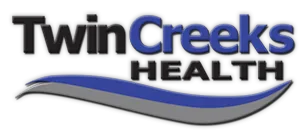The couch is a pretty inviting place if you’re suffering from the chronic pain and discomfort of fibromyalgia. Living a mostly sedentary lifestyle, however, can actually make the condition worse and cause you to experience more pain than you would if you exercised on a regular basis. Exercise is, according to many doctors, one of the best natural treatments for fibromyalgia and vital to taking back your life.
Before you start thinking that exercise just isn’t worth the effort, consider the following benefits it holds for people with fibromyalgia:
• Stronger muscles
• Stronger bones (with light strength training)
• Increased flexibility
• Better circulation
• Greater production of endorphins, which results in:
Less depression and anxiety
Better quality of sleep
Pain relief
• Increased production of serotonin and adrenaline, both of which have been shown to inhibit pain
• Lessens the risk of cardiovascular diseases
• Lessens the risk of stroke
• Easier weight loss and weight maintenance, which helps to relieve stress on joints
• Higher energy level
• More endurance
People with fibromyalgia should avoid vigorous workouts and sports activities, which carry real potential for injury due to tight muscles and low endurance levels (overdoing exercise with tight muscles can lead to painful micro-tears). Instead, consider taking part in more gentle forms of exercise, like yoga, Pilates, Tai Chi, walking, biking, and swimming. Start with short distances and durations for the last three, and always start any workout with slow and gentle stretching (in fact, fibromyalgics should do some stretching every day).
Body building is not recommended for people with fibromyalgia, but it’s fine to work with light weights. Start with one to two pound weights, and go up from there. It’s more important to add repetitions than weight, as more repetitions will tone you instead of adding bulk. If you find one weight level has become too easy for you, consider adding more reps before exchanging your light dumbbells for heavier ones. No dumbbells? Water bottles or cans of soup will work in a pinch.
You may also want to consider the following gear for your workouts:
• Comfortable, non-restrictive clothing
• Yoga or Pilates mat (a Pilates mat is recommended, as it will be thicker and provide more cushioning than a yoga mat)
• Resistance bands
• Ankle weights (even great for wearing as you go about your daily activities)
• Exercise ball
• Pilates “magic circle,” a soft rubber ring created to provide targeted toning
If you’re someone who’s dealt with a lot of chronic pain due to fibromyalgia, start with the simplest of exercise routines: stretching, walking, and light strength training. If you can do nothing but stretch, start with that. Above all, remember—especially for those with fibromyalgia—that exercise should never be taken to the point of pain.
